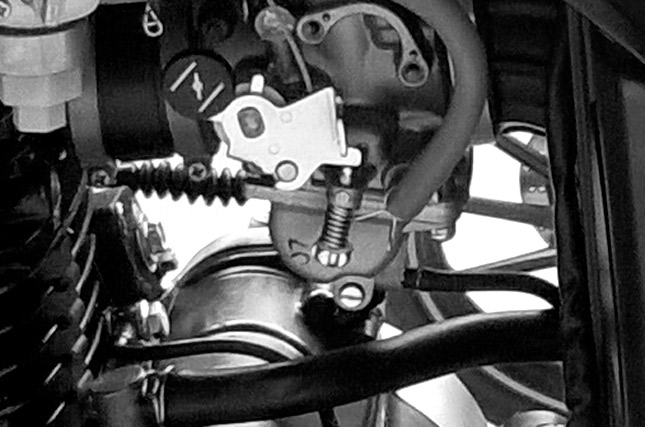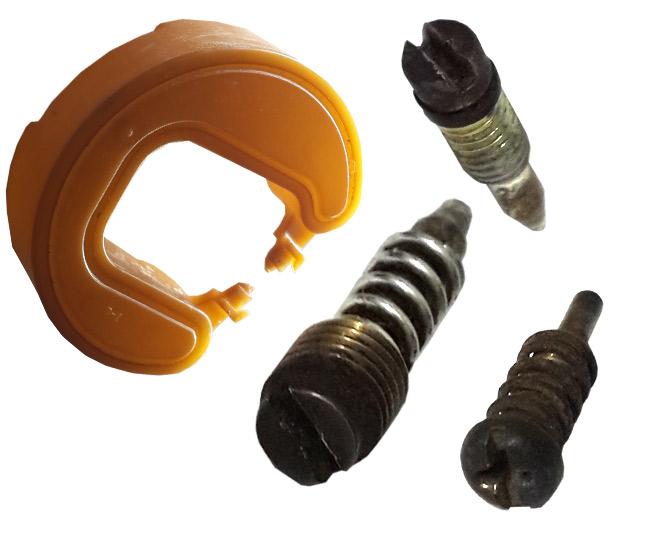 The carburetor is one of the oldest and the best technology used till date to prepare the air fuel mixture that is sent to the engine. Finding the proper air fuel mixture will help your engine to live longer and to perform at its best. Adjusting the carburetor to its proper settings will help in reducing the unwanted stress that the engine takes up. Most of us have a vague knowledge on how the carburetor works, but we at BikesIndia would love to share a few tips on how to tune your motorcycle’s carburetor to obtain the best air fuel mixture and maximum performance.
The carburetor is one of the oldest and the best technology used till date to prepare the air fuel mixture that is sent to the engine. Finding the proper air fuel mixture will help your engine to live longer and to perform at its best. Adjusting the carburetor to its proper settings will help in reducing the unwanted stress that the engine takes up. Most of us have a vague knowledge on how the carburetor works, but we at BikesIndia would love to share a few tips on how to tune your motorcycle’s carburetor to obtain the best air fuel mixture and maximum performance.RELATED ARTICLE: Importance Of Air Fuel Mixture/Ratio Explained
Please note that safety is the number one priority so wear all the safety gear before you start the process. Use proper tools to avoid the damage of the screw heads or other components. First, let’s start with the various main parts inside the carburetor.

Float Chamber:
The fuel level is controlled by the fuel floats and the float valve. The floats are hollow and are made up of a material that will float on fuel. The part of the float processes against the float valve, called the needle and seat. Most of the times the float valve needle is bendable so that you can adjust the fuel in the float bowl/ chamber. All plastic floats are not adjustable.
Pilot Jet:
The idle jet controls the idle, this screw leans or riches the fuel mixture for a smooth idle and up on one quarter throttle. They affect the mixture as long as the vacuum in the venture is over them. As the throttle further opens, the vacuum moves the needle jet and jet needle.
Throttle Valve:
The throttle valve is the big slide that opens and closes the throttle, it has a bevel angle cut in one side of the big round slide, towards the air cleaner.
Jet Needle:
This needle rides the throttle slide that goes into the needle jet. The jet needle controls the mixture from 30-80% open throttle. It will come in different sized tapers. The top end of the jet needle has grooves cut in it, usually five, you can move the clip up to lean the mixture or down the needle to increase the richness.
Main Jet:
This controls the mixture from 60%-100% open throttle.
Tuning Method:The fuel level is controlled by the fuel floats and the float valve. The floats are hollow and are made up of a material that will float on fuel. The part of the float processes against the float valve, called the needle and seat. Most of the times the float valve needle is bendable so that you can adjust the fuel in the float bowl/ chamber. All plastic floats are not adjustable.
Pilot Jet:
The idle jet controls the idle, this screw leans or riches the fuel mixture for a smooth idle and up on one quarter throttle. They affect the mixture as long as the vacuum in the venture is over them. As the throttle further opens, the vacuum moves the needle jet and jet needle.
Throttle Valve:
The throttle valve is the big slide that opens and closes the throttle, it has a bevel angle cut in one side of the big round slide, towards the air cleaner.
Jet Needle:
This needle rides the throttle slide that goes into the needle jet. The jet needle controls the mixture from 30-80% open throttle. It will come in different sized tapers. The top end of the jet needle has grooves cut in it, usually five, you can move the clip up to lean the mixture or down the needle to increase the richness.
Main Jet:
This controls the mixture from 60%-100% open throttle.
Warm up the engine well before you begin the process; take the bike for a good 10-15 minute spin. Do not leave the engine under idle for 10-15 minutes because the results won’t be very effective. Now you will have to look for the air fuel screws. You will notice that there will be two screws, one for the idling rpm and the other for the air fuel mixture.
Set the idle speed adjusting screw, clockwise to increase the rpm and anticlockwise to decrease the rpm. The optimum idle range can vary from 900-1200 rpms. Now adjust the idle screw to a mixture by turning the screw so that the engine runs poorly. Then turn the idle screw clockwise until the engine begins to grumble, keeping the positions in the mind. Set the idle mixture screw halfway to obtain the best idling position. Now the engine will run under a lean mixture.
Various stages can be noted by looking into the tachometer or by just listening to the engine's sound. The RPM at this state will not be steady. Start turning the fuel screw 1/8th turn at a time. The RPM will slowly increase and become steady. In fewer than 5 full turns, the RPM will become constant. After this point screwing must be avoided, this can be the best setting for the engine. Trying to screw more the mixture will become rich and the fuel efficiency will start going down. Repeat the process for best results. When the engine is properly tuned crisp throttle response and decent engine sound can be observed.
If you really want to get the best results, try taking the motorcycle for a spin after every adjustment you make, this way you can choose the most optimum performance settings for your engine.
By: Rishath Suresh











